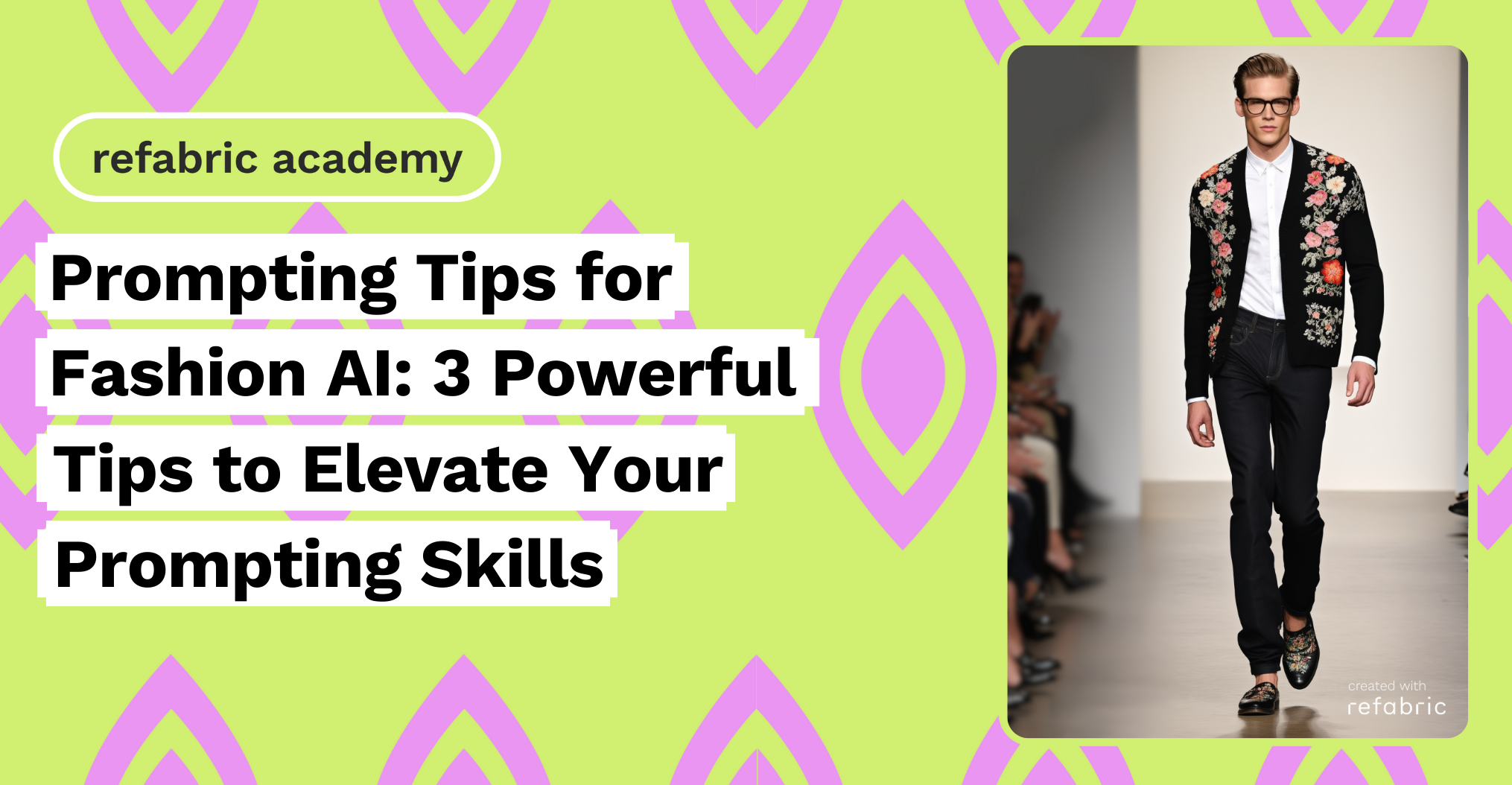Fashion AI has proved itself to be a great tool, enabling designers to take bold steps in fashion, easily. As fashion AI could be used in many ways, it helps to enhance creativity in a fast-paced design environment. By that, effective prompts play a crucial role in AI’s productivity in fashion design. To unlock these tools’ full potential, the AI needs both strategy and artistry. So, how can designers achieve the prompting perfection that will lead to breathtaking AI fashion design? We gathered 3 tips to elevate your prompting skills for your fashion AI design process.
1. Detailed and Precise Descriptions for Fashion AI Design Excellence
Bringing precise and detailed prompts are one of the most important elements of AI in fashion design. It relies on precision, much like a tailor needs precise measurements to create the ideal fit. Including all the details of the design element is highly important to get the desired result, such as colors, materials, patterns and also cultural influences. For instance, you may say, “a metallic mini skirt with 60’s Barbarella sci-fi influence, with a pink hue in its reflection”.
Precision leads to more accurate outputs and allows you to push boundaries within your designs. Fashion AI tools are great at intertwining multiple components together and creating new looks from the fusion of prompts. For example, modern metallic coatings on traditional African textiles can create new aesthetics. Specific prompts lead to more precise fashion AI designs.
2. Experiment with Emotion and Mood
If you strip fashion to clothing, there wouldn’t be much to discuss about. But fashion is not only about clothes, but it is also a thought-provoking statement for self-expression. Fashion AI can translate abstract concepts into tangible designs, which can resonate more deeply. It is important to think about what kinds of emotions to be conveyed with the fashion design while prompting. This could be a “breezy winter collection Slavic girl aesthetic that incorporates furry looks with white and beige tones”.
AI tools in fashion design bring big datasets of color theory, historical designs and emotional relationships customers have with materials. As an example, angular cuts and vivid neon might communicate energy and modernism, while warm tones and smooth, flowing textures may inspire cosiness and nostalgia. Emotional playfulness could change the whole direction of the collection, leading to a different storytelling behind your designs.
3. Iterate and Refine Outputs
Prompting for fashion AI is an iterative process. The first attempt on your prompt will be less likely to cover the designer’s expectations. Instead, thinking about fashion AI as a collaborative process that includes brainstorming, iterations and editing might help to achieve the best possible outcomes that speak to your art. For example, in the first attempt, you might have said “2024 Londoner outfit” and the AI produced an overly simplistic and maybe even stereotypical design. To fix that, you can refine your prompt by saying “A summer 2024 Londoner outfit with a white oversized shirt, colorful tie, metallic hair clips with a sleek hair updo, jean mini skirt”.
In addition to that, giving layered prompts can lead to incredible results. Starting from a general prompt and adding layers of complexity could help you collaborate with the AI and give more space for playful creativity. This helps to create unique and innovative outcomes from fashion AI.
Give your partner in creativity a chance. Fashion AI can help designers unlock infinite possibilities for creative outlooks through precise, iterative and emotionally resonant prompts. It could be anything from cultural fusion to classic silhouettes, or moving further and bolder in the fashion realm, prompting skills will increase your ability to craft beautiful garments and items of clothing. As AI in fashion design continues to grow, mastering the art of prompting will be essential for anyone looking to make their mark in the dynamic world of fashion AI design.
